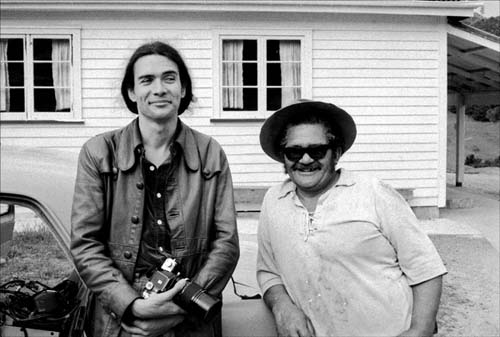
In this presentation, documentary photographer John Miller (Ngapuhi) will speak to the prototype version of an interactive audiovisual report or timeline on display in the Media, Investigative Journalism and Technology conference centre atrium. Focusing on disputes around the development of the 5000 ha Ngatihine forestry block in mid-Northland, the report represents a case study of how land alienation issues were represented in the media during the 1970s.
The Ngatihine dispute typified a confrontation between the prevailing Pakeha ethos of the time that unused Māori lands should be developed as efficiently as possible, and the countervailing belief of Tangata Whenua that they should determine the use put to the land without government or corporate coercion.
The audiovisual report is from the eyes of a participant and an observer, documenting Miller’s work as a photographer and land rights activist. His photographs are contextualised with material from an extensive collection of Māori Land Court documents, minutes of meetings, press releases, newspaper clippings and telephone call logs (1977-82).
Miller’s phone logs represent the effort it took to pitch this issue to various sectors of the media. Media response is of particular interest as it involved an issue peripheral to the concerns of mainstream media in New Zealand during that time.
It can be argued that those land alienation issues in the 1970s that received considerable mainstream coverage (Māori Land March, Takaparawhau/Bastion Point and the Raglan Golf Course dispute) did so because of their spectacular charge, whereas the smaller issues were largely left to community and alternative media outlets. In the mid-1970s there were no dedicated Māori news outlets as there are today - a situation that exemplifies Arlene Morgan’s “blind spot” phenomenon in minority issues reporting. (Pacific Journalism Review, 2009).
Paper delivered at the Media, Investigative Journalism and Technology 2010 conference @ AUT University, 4/5 December 2010.
http://pacific.scoop.co.nz/2010/11/forgotten-ngatihine-forestry-land-rights-issue-comes-to-life/
Research paper later published in the peer-reviewed Pacific Journalism Review, 17(1), 175-193
www.pjreview.info/articles/seeing-wood-trees-media-coverage-ngatihine-forestry-block-legal-dispute-1976-8-480


